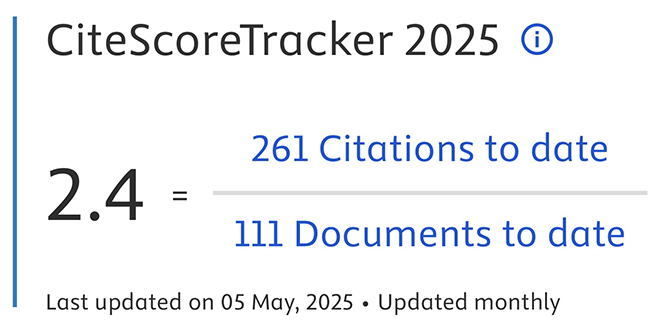The Design Process towards Resource Productivity. A Case Study
DOI:
https://doi.org/10.19229/2464-9309/592019Keywords:
resource productivity, cradle to cradle, design for disassembly, recycled materials, green public procurementAbstract
The transition to a circular economy, applied as a priority to the built environment, is recognized in the most recent EU guidelines as a promising approach to increase resource productivity. In Italy, a powerful lever is represented by the mandatory application of the Minimum Environmental Criteria within Green Public Procurement which, in construction (Ministerial Decree 11/10/2017), concern the totality of the contracts. The paper describes one of the first complete implementations of these Criteria, considering the innovation in the design process from a life cycle perspective, which is reflected in particular in the methods of selection and procurement of natural and eco-friendly materials, with recycled content and certificated products, as well as in the design for disassembly of building components.
Downloads
Article Metrics Graph
References
XN Architects and Danish Environmental Protection Agency (2015), Building a circular future, KLS Grafisk Hus, Denmark. [Online] Available at: www.byggerietssamfundsansvar.dk/bibliotek/generel/19-cirkulaert-byggeri-3xn-og-mt-hojgaard/file [Accessed 3rd January 2019].
Carvalho Machado, R., Artur de Souza, H. and de Souza Veríssimo, G. (2018), “Analysis of Guidelines and Identification of Characteristics Influencing the Deconstruction Potential of Buildings”, in Sustainability, vol. 10, issue 8, 2604, pp. 1-20. [Online] Available at: www.mdpi.com/2071-1050/10/8/2604 [Accessed 22 January 2019].
Cianciullo, A. (2016), “Materia rinnovata. Quant’è circolare l’economia: l’Italia alla sfida dei dati”, in Materia rinnovabile, Short Report, giugno 2016. [Online] Available at: www.conoe.it/wp-content/uploads/2016/06/MateriaRinnovata_2016.pdf [Accessed 18 March 2019].
Co.Project (2016), Circularity in the built environment: Case studies – A compilation of case studies from the CE100. [Online] Available at: www.ellenmacarthurfoundation.org/assets/downloads/Built-Env-Co.Project.pdf [Accessed 6 February 2019].
Commissione Europea (2019), Relazione della Commissione al Parlamento Europeo, al Consiglio, al Comitato Economico e Sociale Europeo e al Comitato delle Regioni sull’attuazione del Piano d’azione per l’economia circolare, 190 definitivo. [Online] Available at: eur-lex.europa.eu/legal-content/IT/TXT/PDF/?uri=CELEX:52019DC0190&from=EN [Accessed 1st April 2019].
Commissione Europea (2015), L’anello mancante – Piano d’azione dell’Unione europea per l’economia circolare, 614 definitivo. [Online] Available at: www.minambiente.it [Accessed 1st April 2019].
Commissione Europea (2011), Tabella di marcia verso un’Europa efficiente nell’impiego delle risorse, 571 definitivo. [Online] Available at: www.minambiente.it [Accessed 1st April 2019].
Densley Tingley, D. and Allwood, J. M. (2015), “The rise of design for deconstruction. A cradle to cradle approach for the built environment”, in Narayanan, Y., Bräu, L. and Deutz, P. (eds), Proceedings of the 21st International Sustainable Development Research Society, 10-12 July 2015 in Geelong, Deakin University and Alfred Deakin Research Institute, Geelong, pp. 244-252. [Online] Available at: media.isdrs.org/2015/12/ISDRS15-Proceedings_2015.pdf [Accessed 8 March 2019].
Durmisevic, E. (2018), Reversible Building Design Guidelines, BAMB WP3 Reversible Building Design final output, University of Twente, NL. [Online] Available at: www.bamb2020.eu/wp-content/uploads/2018/12/Reversible-Building-Design-guidelines-and-protocol.pdf [Accessed 12 March 2019].
Ficco, P. (ed.) (2018), Manuale operativo per gli Appalti Verdi – GPP nell’Edilizia, Quaderni GPP della Rivista Rifiuti, n. 3, Edizioni Ambiente, Milano.
Gargari, C., Hamans, C. and Torricelli, M. C. (2013), “L’impegno dell’industria delle costruzioni per promuovere la sostenibilità dei prodotti: un approccio comune europeo per le prestazioni ambientali di prodotto | The building sector commitment to promote the sustainability of construction products: a common European approach for the Environmental Product Performances”, in Techne, vol. 5, pp. 101-109.
Icibaci, L. (2019), Re-use of Building Products in the Netherlands – The development of a metabolism based assessment approach, A+BE | Architecture and Built Environment, S. l, vol. 2. [Online] Available at: journals.open.tudelft.nl/index.php/abe/article/view/3248 [Accessed 31 March 2019].
Mulhall, D. and Braungart, M. (2010), Cradle to Cradle criteria for the built environment, Duurzaam Gebouwd/CEO Media BV, Nunspeet (NL).

Downloads
Published
How to Cite
Issue
Section
License
This Journal is published under Creative Commons Attribution Licence 4.0 (CC-BY).
License scheme | Legal code
This License allows anyone to:
Share: copy and redistribute the material in any medium or format.
Adapt: remix, transform, and build upon the material for any purpose, even commercially.
Under the following terms
Attribution: Users must give appropriate credit, provide a link to the license, and indicate if changes were made; users may do so in any reasonable manner, but not in any way that suggests the licensor endorses them or their use.
No additional restrictions: Users may not apply legal terms or technological measures that legally restrict others from doing anything the license permits.
Notices
Users do not have to comply with the license for elements of the material in the public domain or where your use is permitted by an applicable exception or limitation.
No warranties are given. The license may not give users all of the permissions necessary for their intended use. For example, other rights such as publicity, privacy, or moral rights may limit how you use the material.


















































































